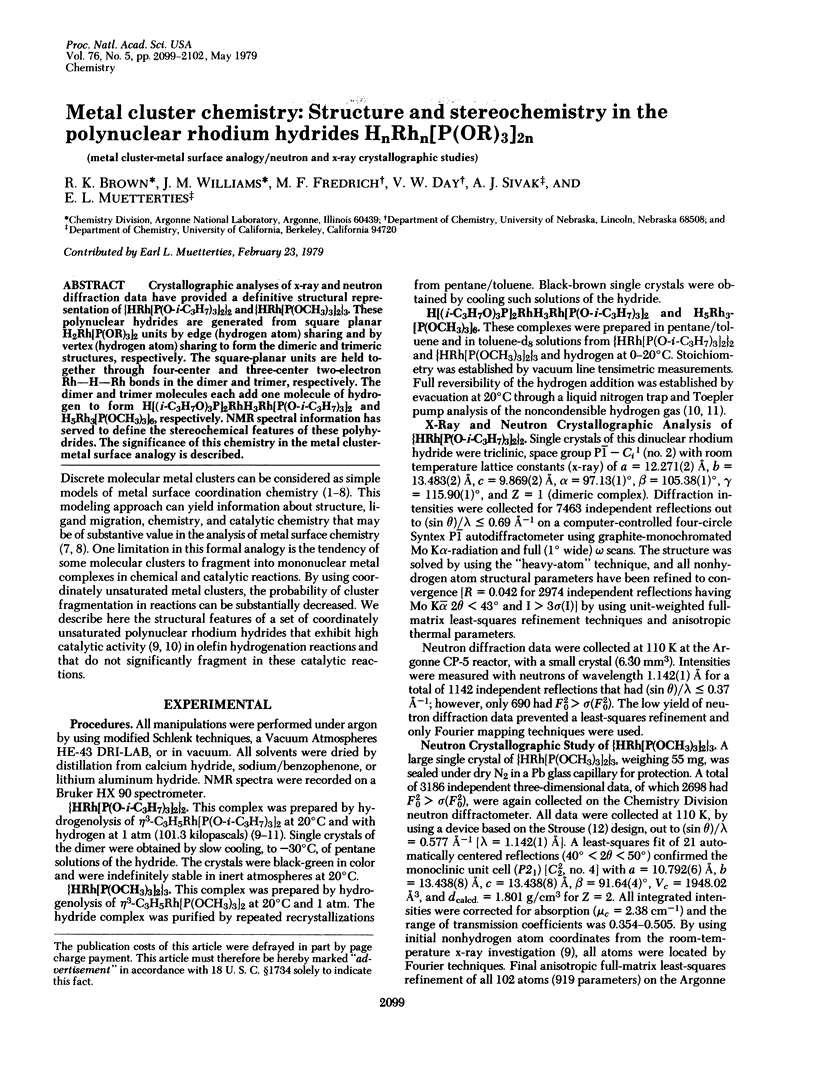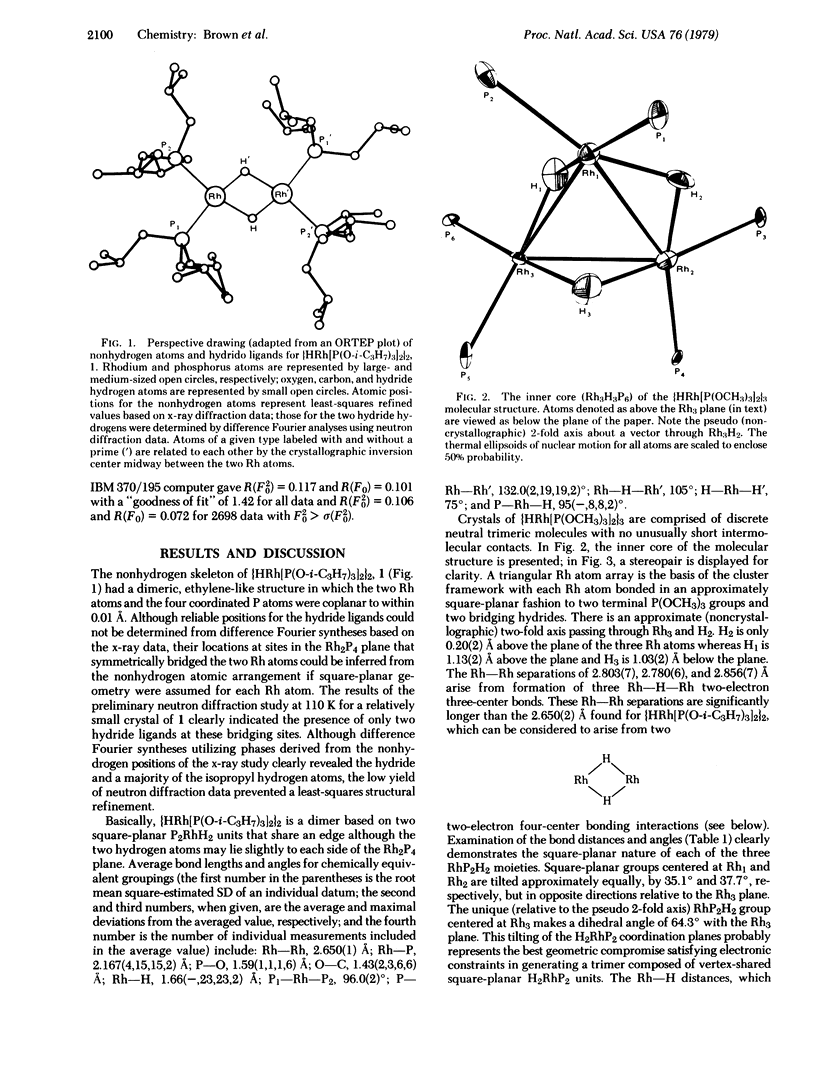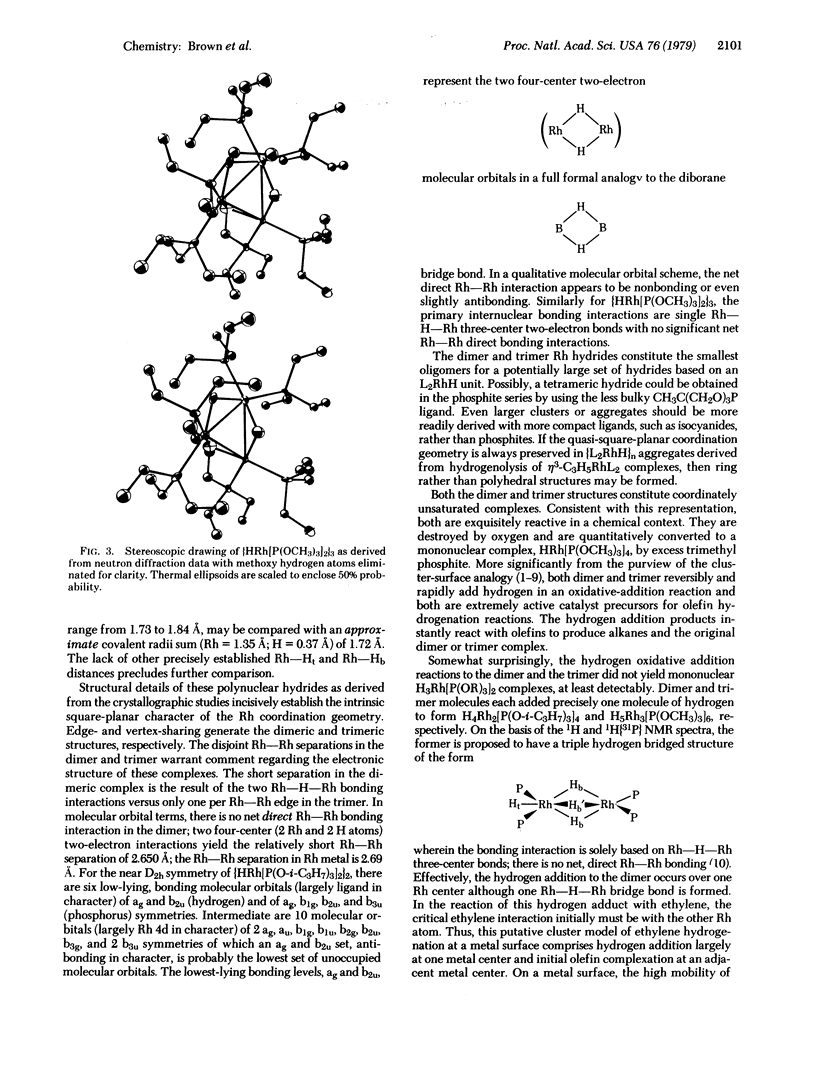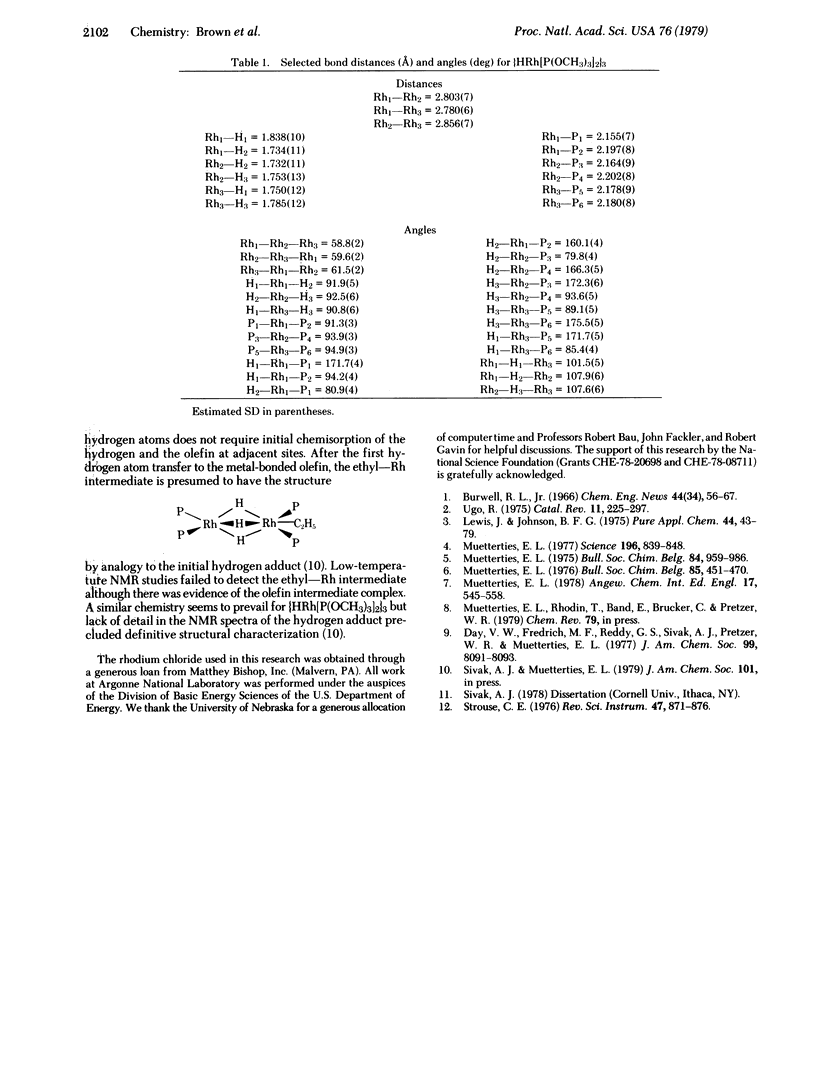Abstract
Crystallographic analyses of x-ray and neutron diffraction data have provided a definitive structural representation of {HRh[P(O-i-C3H7)3]2}2 and {HRh[P(OCH3)3]2}3. These polynuclear hydrides are generated from square planar H2Rh[P(OR)3]2 units by edge (hydrogen atom) sharing and by vertex (hydrogen atom) sharing to form the dimeric and trimeric structures, respectively. The square-planar units are held together through four-center and three-center two-electron Rh—H—Rh bonds in the dimer and trimer, respectively. The dimer and trimer molecules each add one molecule of hydrogen to form H[(i-C3H7O)3P]2RhH3Rh [P(O-i-C3H7)3]2 and H5Rh3[P(OCH3)3]6, respectively. NMR spectral information has served to define the stereochemical features of these polyhydrides. The significance of this chemistry in the metal cluster-metal surface analogy is described.
Keywords: metal cluster-metal surface analogy, neutron and x-ray crystallographic studies
Full text
PDF



Selected References
These references are in PubMed. This may not be the complete list of references from this article.
- Muetterties E. L. Molecular metal clusters. Science. 1977 May 20;196(4292):839–848. doi: 10.1126/science.196.4292.839. [DOI] [PubMed] [Google Scholar]


